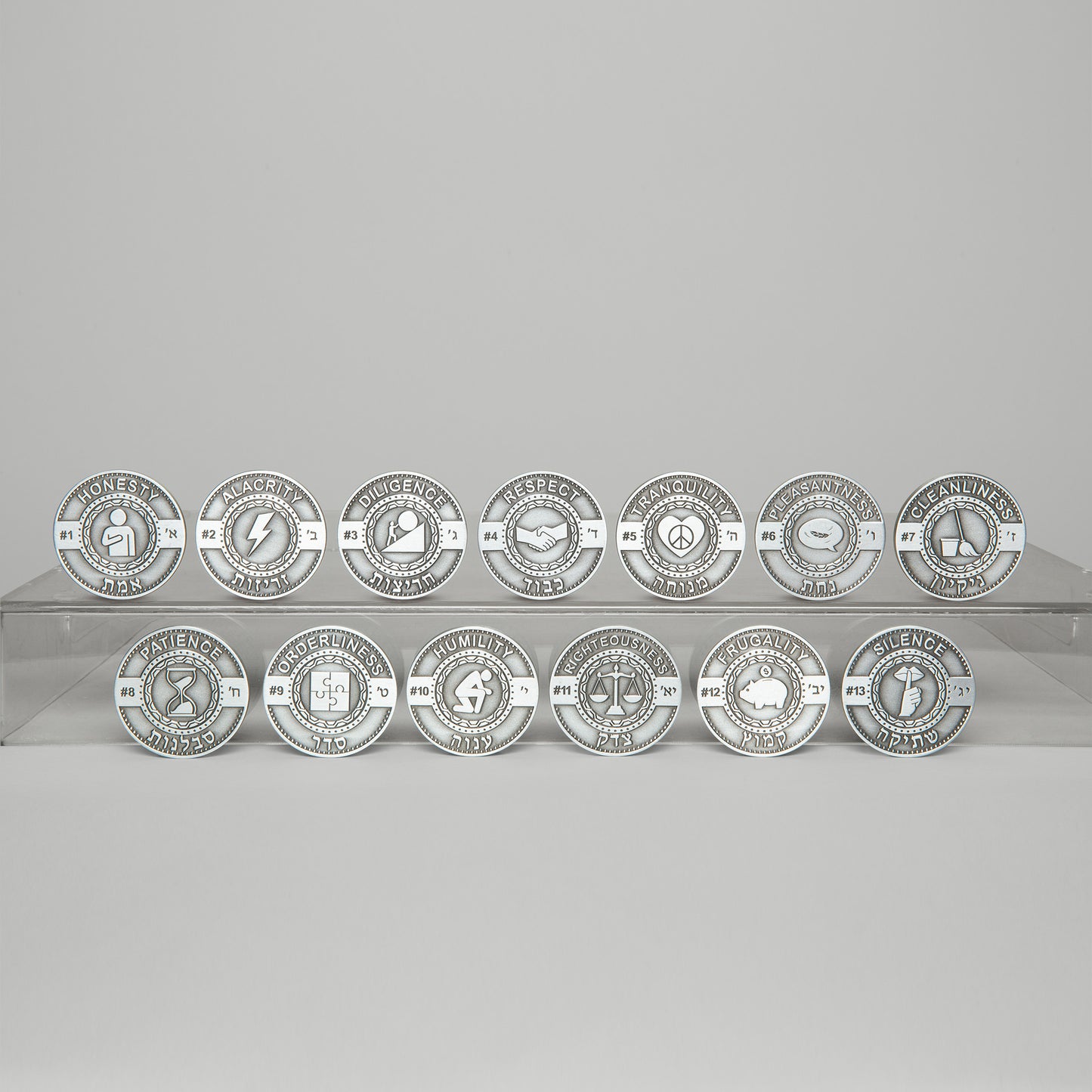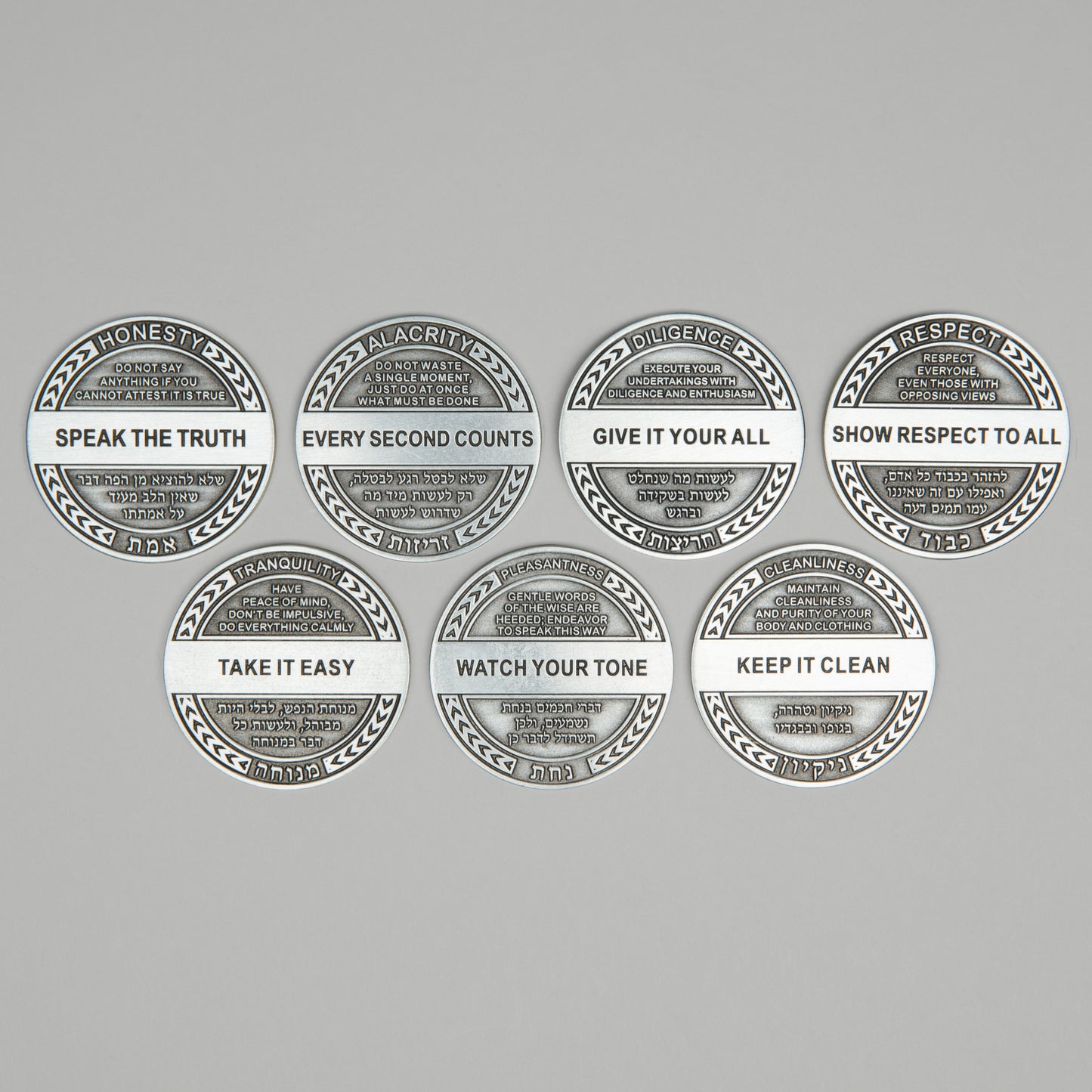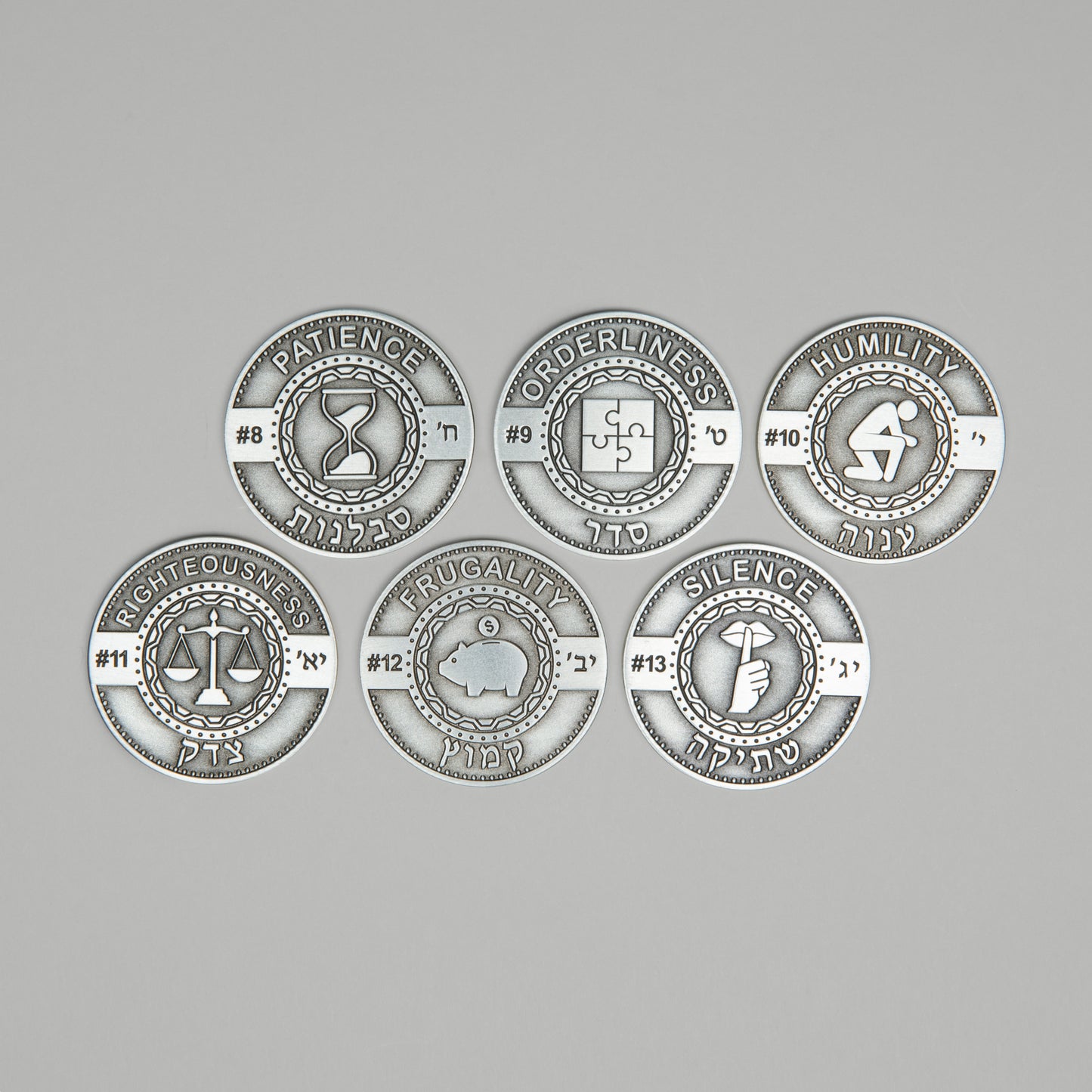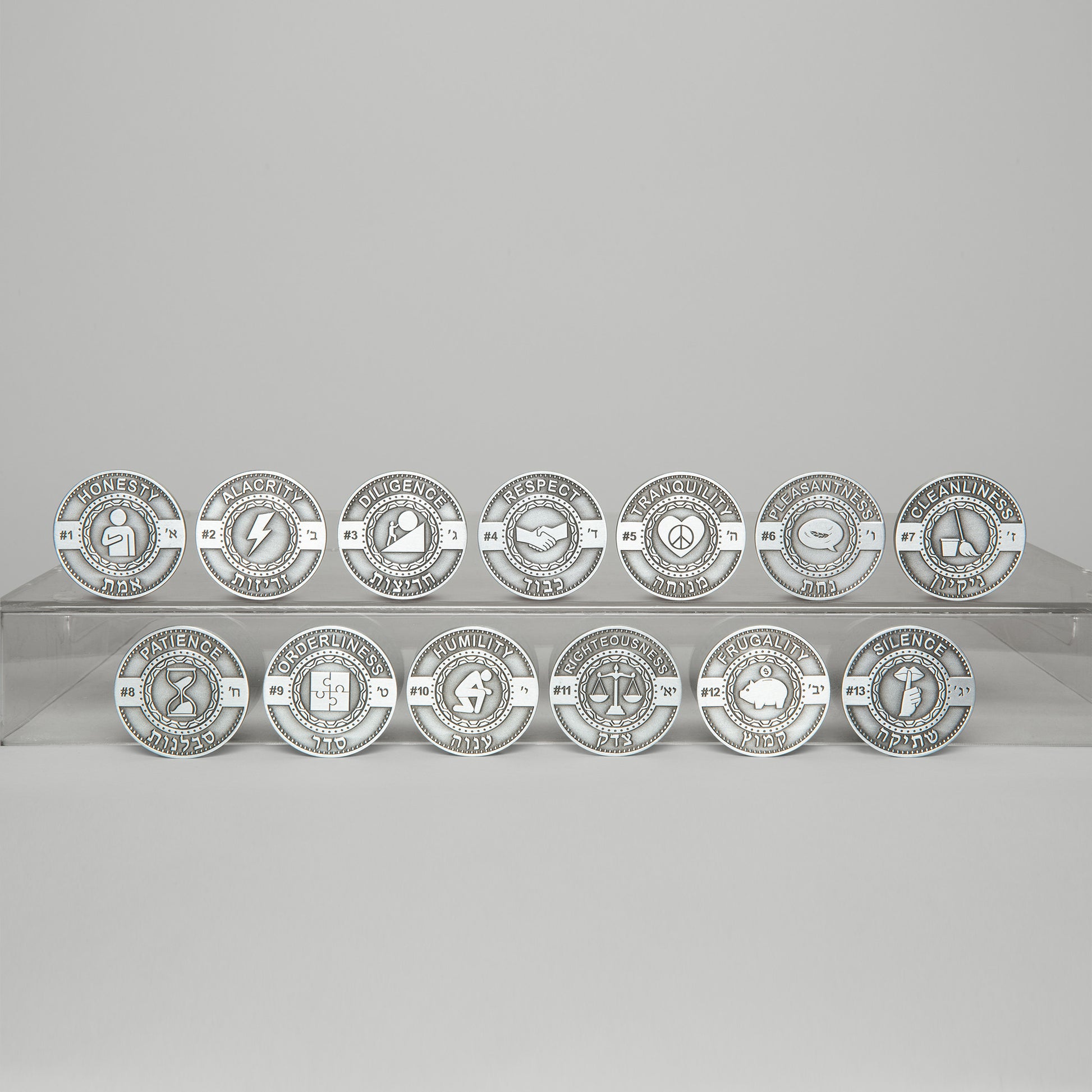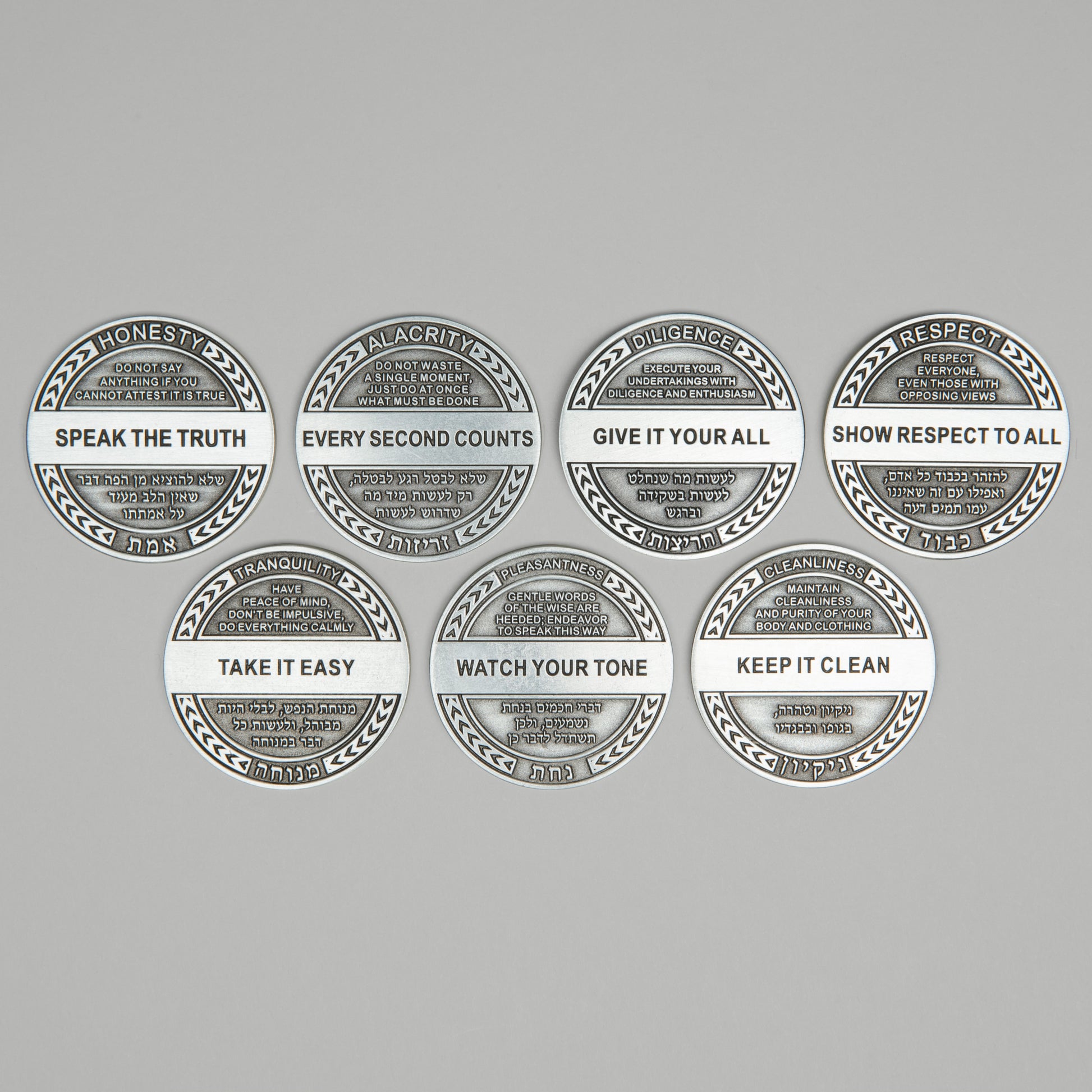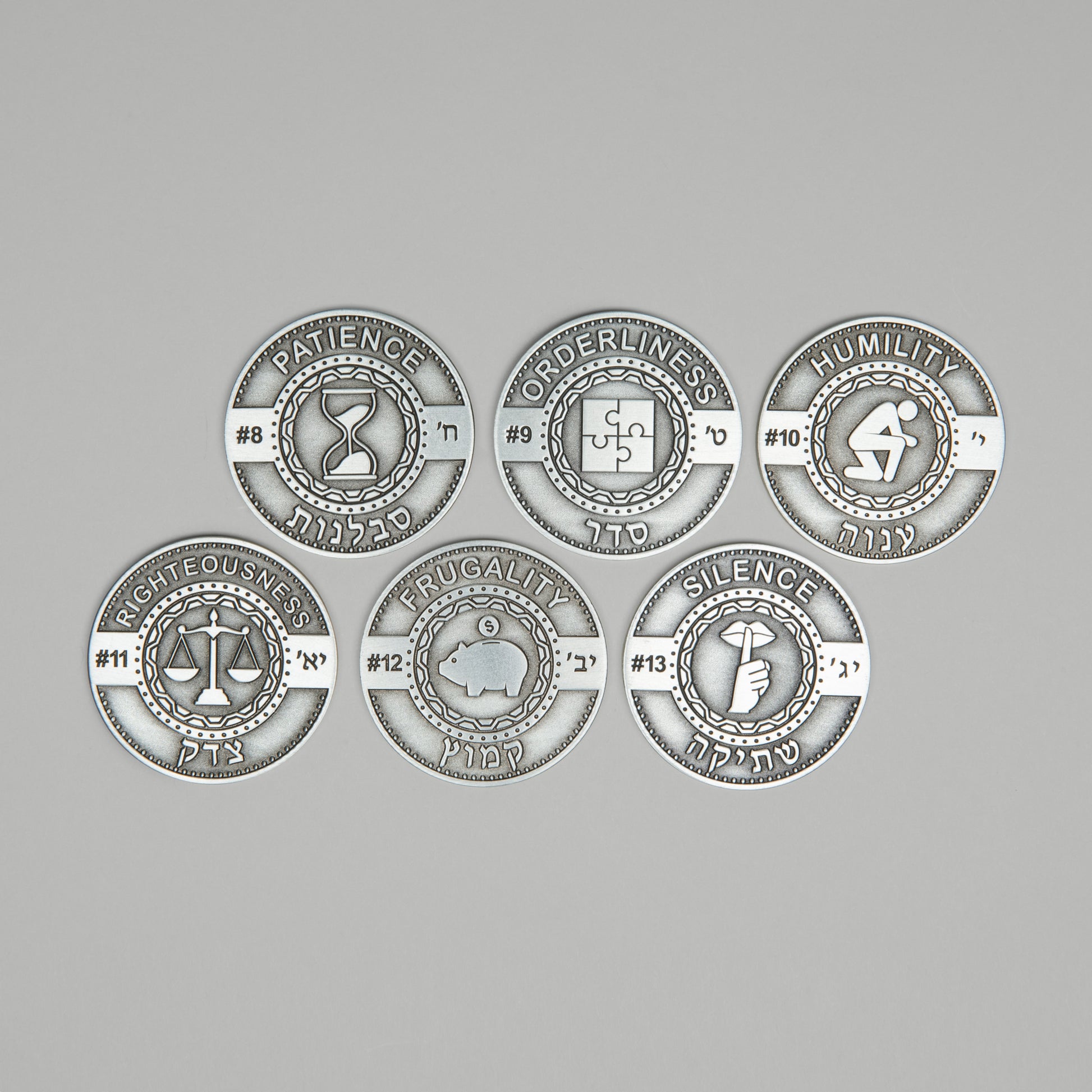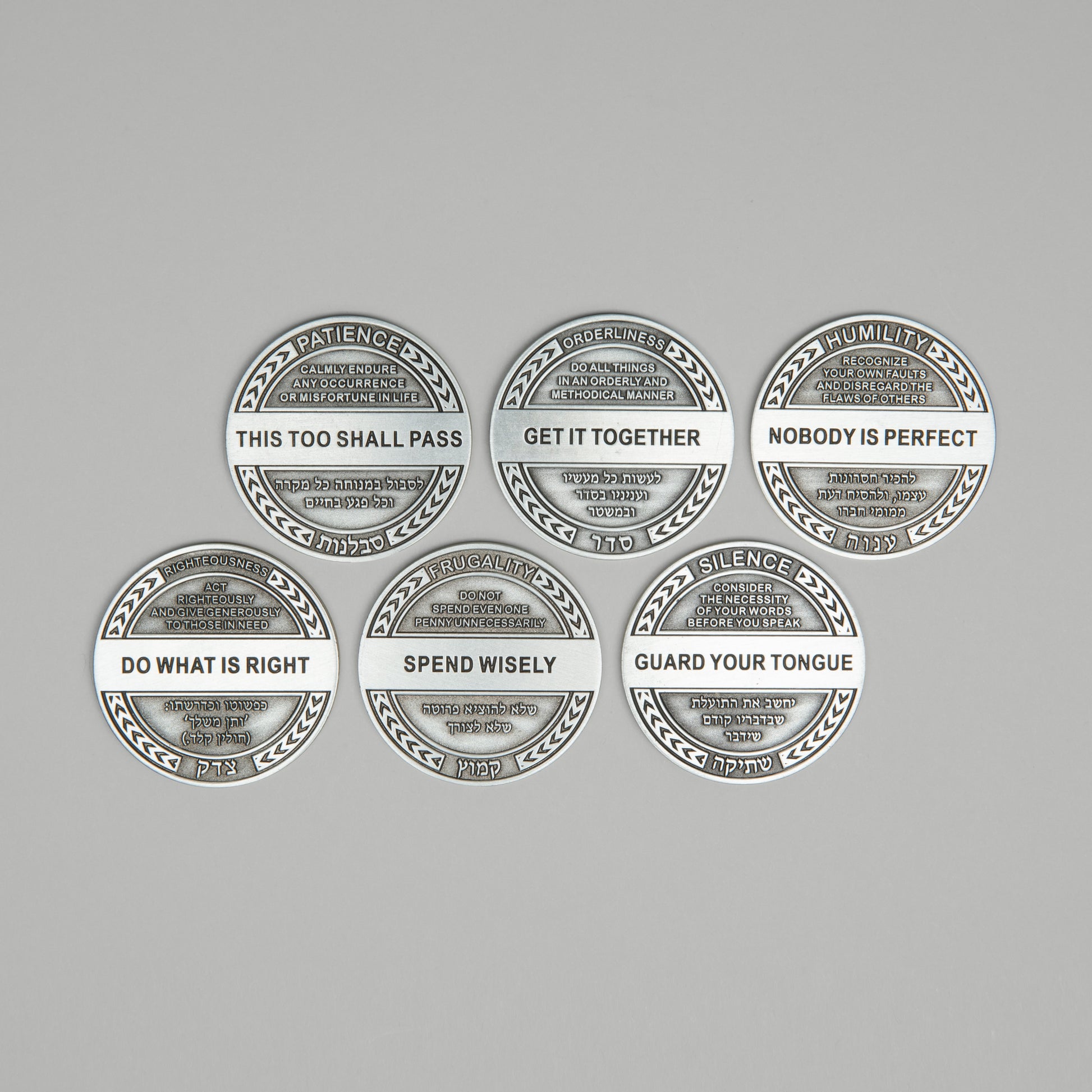Middos Challenge Coin Set
Middos Challenge Coin Set
Couldn't load pickup availability
Two things you may not have known about Benjamin Franklin:
- He was inducted into the International Swimming Hall of Fame in part for (maybe) inventing water skiing.
- His autobiography was an inspiration for the influential Jewish school of thought called the Mussar Movement, devoted to personal growth and character development.
In Franklin's autobiography, he lists 13 traits he thought were most beneficial to perfecting one's character. He concentrated on improving one trait per week, completing a cycle of all 13 before restarting the process, with four cycles comprising a whole year.
This method was promoted by R' Mendel Santover in his book Cheshbon HaNefesh1, and eventually picked up by R' Yisrael Salanter, founder of the Mussar Movement, with some changes to the 13 traits, but advocating the same process2.
This set of 13 oversized challenge coins provides a convenient method of following this self-improvement practice. Challenge coins are meant to be carried or kept handy to remind you of a goal or achievement.
Each coin displays one of the 13 traits (or middos) on the front. The backs have a pithy statement encapsulating the message of each character trait and some explanatory text in English and Hebrew from R' Baruch HaLevi Epstein3
Coins are selected one-by-one from the enclosed velvet bag, one per week, until a cycle is completed.
These zinc coins are 1.75" in diameter and each comes in a protective plastic capsule.
---------------------
2 See this article for a fuller exploration of this topic.
3 Mekor Baruch, Vol. 2, p.1111A
---------------------
A There is a small difference between the text in Mekor Baruch and what is minted on the back of the Righteousness coin. This was intentional. Feel free to send an email if you'd like to know why the change was madea.
---------------------
a A footnote to a footnote is called a sub-footnotei.
---------------------
i Sub-footnotes are considered non-standard in academic publications, but may appear in technical writing.*
---------------------
* I can do this all day.
Share
